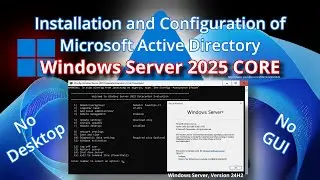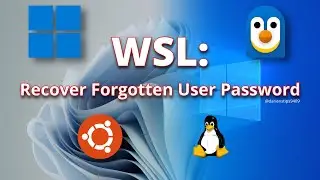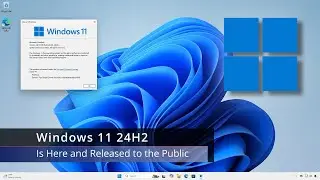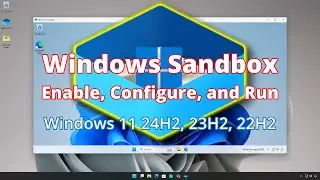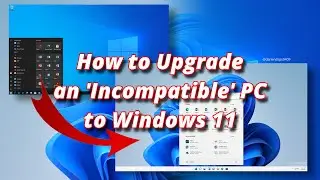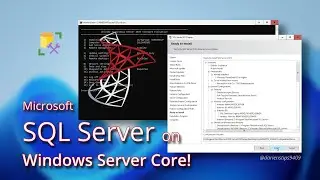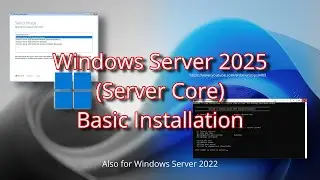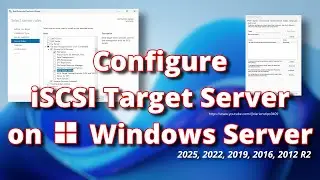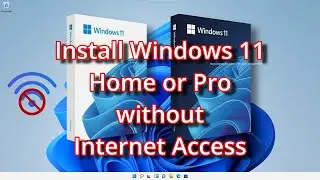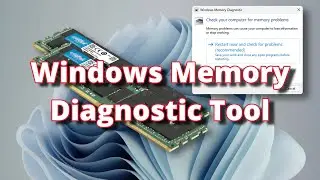Conquer GPT Disk Boot Mirroring in Windows Server: Step-by-Step Guide for UEFI Systems
Learn how to safeguard your Windows Server 🛡️ using built-in software RAID by mirroring your boot partition! Hardware RAID isn’t always an option, but Windows Server provides a powerful solution right out of the box. In this step-by-step tutorial, we’ll navigate the complexities of mirroring the boot drive on modern UEFI systems using GPT disks.
💡 You'll learn:
✅ How to prepare primary and secondary drives for mirroring 🖥️
✅ Create & configure EFI and recovery partitions 🛠️
✅ Convert disks to dynamic and set up a reliable mirror 🔄
✅ Configure boot entries with BCDEDIT
✅ Conduct practical tests simulating primary & secondary drive failures 💥
✅ Reestablish a broken mirror to restore redundancy quickly ⚙️
🔒 Protect your server’s reliability without needing additional hardware.
Applies to:
✅ Windows Server 2025, ✅ Windows Server 2022, ✅ Windows Server 2019, ✅ Windows Server 2016
Chapters:
0:00 Introduction
0:39 Check Primary Disk and Assign Temp Drive Letters
1:36 Prepare Secondary Drive and EFI Partition for Mirroring
2:27 Create Recovery Partition
3:19 Convert the Drives to Dynamic and Establish the Mirror
4:25 Use BCDEDIT to Configure Boot Entries for the Mirrored Disk
5:46 Test Windows Boot Manager Entries
6:27 Test Failure of OS Drive
7:32 Reestablish a Broken Mirror
8:06 Thank you for watching!
Glossary:
BCD = Boot Configuration Data
GPT = GUID partition table
GUID = Globally Unique IDentifier
HBA = Host Bus Adapter
iSCSI = Internet Small Computer System Interface
JBOD= Just a Bunch Of Disks
NTFS = New Technology File System
OE = Original Equipment
OS = Operating System
RAID = Redundant Array of Inexpensive Disks or Redundant Array of Independent Disks
ReFS = Resilient File System
SAS = Serial Attached SCSI
SSD = Solid State Drive
UEFI = Unified Extensible Firmware Interface
GitHub:
https://github.com/DariensTips/Conque....
Commands:
diskpart
list disk
select disk 0
list part
select part 1
assign letter=a
select part 4
assign letter=q
list volume
select disk 1
online disk
attributes disk clear readonly
convert gpt
list part
select part 1
delete part override
create part efi size=100
format quick fs=fat32 label="System"
assign letter=b
create part msr size=16
create partition primary
shrink minimum=600
create partition primary
format quick fs=ntfs label="Recovery"
assign letter=r
set id="de94bba4-06d1-4d40-a16a-bfd50179d6ac"
gpt attributes=0x8000000000000001
Robocopy.exe q:\ r:\ /e /r:0
cd A:\EFI\Microsoft\Boot
bcdedit /enum all
bcdedit /copy {bootmgr} /d "Windows Boot Manager Cloned"
bcdedit /set { GUID } device partition=b:
bcdedit /enum all
bcdedit /export a:\EFI\Microsoft\Boot\BCD2
robocopy a:\ b:\ /e /r:0
rename-item b:\EFI\Microsoft\Boot\BCD2 BCD
remove-item a:\EFI\Microsoft\Boot\BCD2
Links:
https://learn.microsoft.com/en-us/win...
https://learn.microsoft.com/en-us/tro...
https://learn.microsoft.com/en-us/win...
https://learn.microsoft.com/en-us/pre...)
https://learn.microsoft.com/en-us/tro...
https://learn.microsoft.com/en-us/win...
https://learn.microsoft.com/en-us/win...
https://learn.microsoft.com/en-us/win...
• Windows Recovery Partition: Create or...
• Storage Spaces, Windows Server 2022 21H2
• Storage Spaces: Survive a Windows Ser...
Hashtags:
#windowsserver2025
#RAID
#ServerAdministration
#DataProtection
#SysAdmin
#windows
#windowsserver
Mentions:
@joerebis2063 for asking a question and giving me the idea of doing this video.








